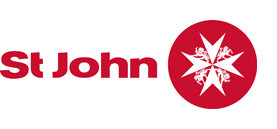First aid for shock
Signs and symptoms of shock
Signs of shock can include:
- weak, rapid pulse
- cold, clammy skin
- faintness/dizziness
- nausea.
Immediately after an injury, people may show little evidence of experiencing shock. Signs and symptoms may gradually develop depending on:
- severity of the injury
- continuation of fluid loss
- effectiveness of management.
Warning
- Shock can be life-threatening.
- Try not to leave a patient suffering from shock, alone.
Managing shock
- Follow DRSABCD and manage injuries such as severe bleeding.
- Reassure the patient.
- Raise the patient’s legs (unless they have fractures or a snake bite) above the level of the heart, with head flat on the floor.
- Treat any wound or burn and immobilise fractures.
- Loosen tight clothing around neck, chest and waist.
- Maintain the patient’s body warmth with a blanket or similar. Do not use any source of direct heat.
- Give small, frequent amounts of water to the conscious patient who does not have abdominal trauma and who is unlikely to require an operation in the immediate future.
- Monitor and record breathing, pulse and skin colour at regular intervals.
- Place the patient in the recovery position if the person:
- has difficulty breathing
- becomes unconscious
- is likely to vomit.
This information is not a substitute for first aid training. St John recommends that everyone is trained in first aid.
Where to get help
- For emergency or life-threatening conditions, visit an emergency department or dial triple zero (000) to call an ambulance
- See your doctor
- Visit healthdirect (external site) or call 1800 022 222
This information provided by

Acknowledgements
St John Ambulance Australia
This publication is provided for education and information purposes only. It is not a substitute for professional medical care. Information about a therapy, service, product or treatment does not imply endorsement and is not intended to replace advice from your healthcare professional. Readers should note that over time currency and completeness of the information may change. All users should seek advice from a qualified healthcare professional for a diagnosis and answers to their medical questions.